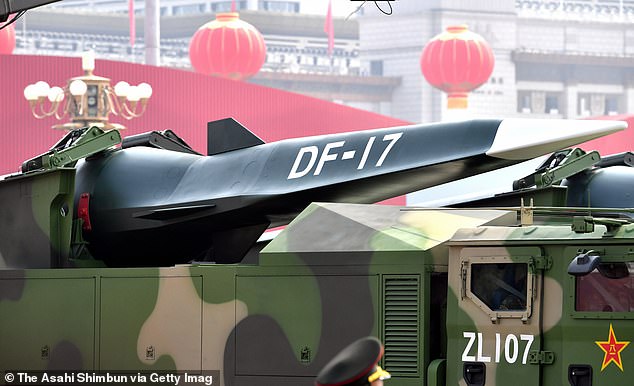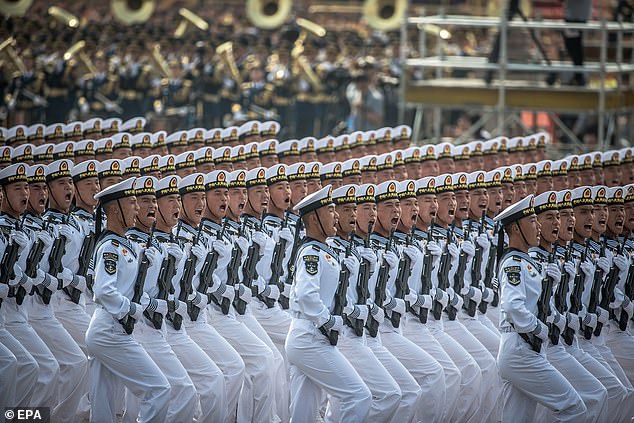China has made ‘dramatic advances’ in its hypersonic missiles that can reach up to 6,500mph and are almost impossible to stop, intelligence officials warn
- China has designed deadly weapons to destroy enemy aircraft carriers
China has made “dramatic progress” in hypersonic missiles that fly too fast to be intercepted, intelligence officials have warned.
They said the DF-17 – and its successor the DF-27 – reach speeds of almost 10,000 kilometers per hour and are almost impossible to stop.
China has designed these weapons to destroy aircraft carriers, such as the British flagships HMS Queen Elizabeth and HMS Prince of Wales, at a range of up to 5,000 miles.
Britain, Australia and the United States, which formed the AUKUS alliance, are frantically seeking preventive measures.
The Chinese ‘Hypersonic Glide Vehicles’ fly on a lower trajectory than intercontinental ballistic missiles, making them more difficult to intercept.
Graphical representation of the dangers of the DF-17 missile, which is flying too fast to be intercepted

DF-17 missile is seen during a military parade to celebrate the 70th anniversary of the founding of the People’s Republic of China on October 1, 2019

Chinese naval troops march past Tiananmen Square during a military parade
One concerned official said: ‘The buzz phrase here is that “speed is the new stealth”.
“China has prioritized this capacity and produced the world’s largest arsenal of trucks.
‘The country made dramatic progress in this area in the 1920s. Countering this threat is a priority for AUKUS.
‘Countering the firing mechanism that fires the missile is more effective than countering the missile itself. We should hit the bases, the launch systems.”
Britain does not have hypersonic missiles, while the US is only testing these weapons.
Russia has deployed much less advanced versions of the Chinese trucks during the conflict in Ukraine.
The Chinese missiles can carry nuclear payloads. It is considered likely that Beijing will try to use its trucks against US and British navies in the South China Sea.
